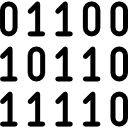Logic diagram: Difference between revisions
Mr. MacKenty (talk | contribs) (Created page with "<center> <blockquote style="padding: 5px; background-color: #FFF8DC; border: solid thin gray;"> File:Exclamation.png This is an '''important concept'''. You should ful...") |
Mr. MacKenty (talk | contribs) |
||
| Line 10: | Line 10: | ||
== | == Logic Diagrams== | ||
<html> | <html> | ||
<iframe width=" | <iframe width="420" height="315" src="https://www.youtube.com/embed/q2OBYz3K6PM" frameborder="0" allowfullscreen></iframe> | ||
</html> | </html> | ||
Revision as of 13:51, 2 June 2016
This is an important concept. You should fully understand this.
A truth table is a mathematical table used in logic—specifically in connection with Boolean algebra, boolean functions, and propositional calculus—to compute the functional values of logical expressions on each of their functional arguments, that is, on each combination of values taken by their logical variables (Enderton, 2001). In particular, truth tables can be used to tell whether a propositional expression is true for all legitimate input values, that is, logically valid.[1]
Logic Diagrams[edit]
Do you understand this topic?[edit]
This can be tricky. There is a neat interactive web-based application here that is helpful for understanding logic diagrams
- Construct a logic diagram using AND
- Construct a logic diagram using OR
- Construct a logic diagram using NOT
- Construct a logic diagram using NAND
- Construct a logic diagram using NOR
- Construct a logic diagram using XOR
Do you have an advanced understanding about this topic?[edit]
This topic is referenced by standards[edit]
- [[2.1.13 Construct a logic diagram using AND, OR, NOT, NAND, NOR and XOR gates. Level 3
